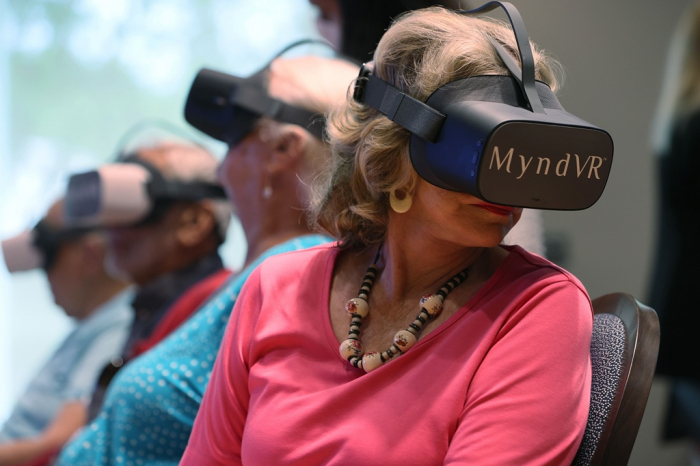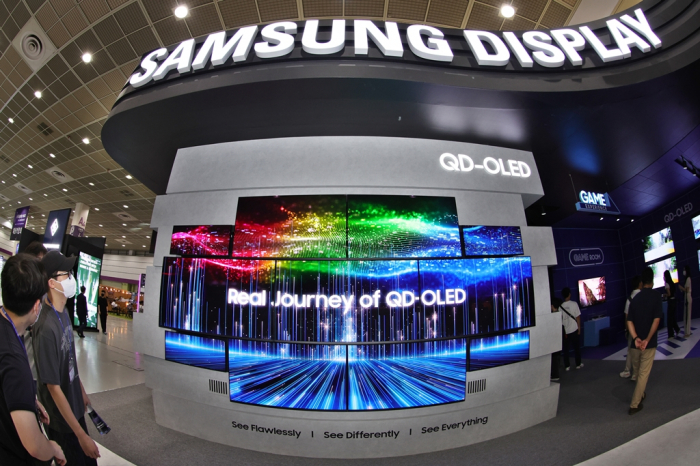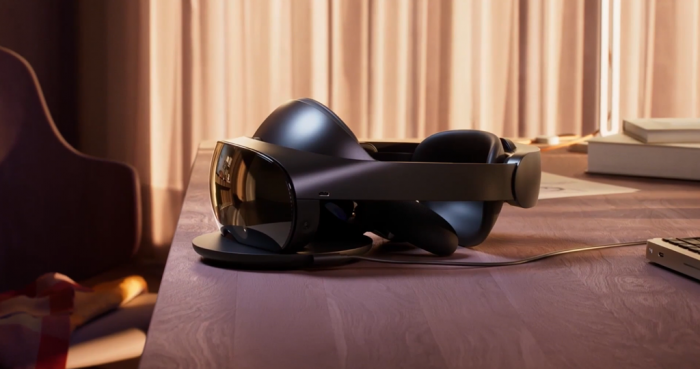Tech, Media & Telecom
Samsung Display to build Micro OLED line for VR, AR devices
Display makers are set to benefit from the takeoff of the metaverse and extended reality wearable devices
By Dec 21, 2022 (Gmt+09:00)
3
Min read
Most Read
LG Chem to sell water filter business to Glenwood PE for $692 million


KT&G eyes overseas M&A after rejecting activist fund's offer


Kyobo Life poised to buy Japan’s SBI Group-owned savings bank


StockX in merger talks with Naver’s online reseller Kream


Meritz backs half of ex-manager’s $210 mn hedge fund



Samsung Display Co., South Korea’s largest display maker, is building a production facility for Micro OLEDs, a next-generation display technology, suitable for virtual reality (VR) and augmented reality (AR) wearable devices.
According to industry sources on Wednesday, the display unit of Samsung Electronics Co. has begun building a pilot Micro OLED line at its plant in Asan, South Chungcheong Province.
The company plans to run the pilot line in the first half of next year and build a mass production system by the end of 2023 with an aim to start production in large quantities in 2024, the sources said.
Samsung Display has already ordered equipment for the Micro OLED manufacturing facility, which will be installed at the company’s A2 line.
SFA Engineering Corp., a Korean semiconductor equipment maker, will make a transfer system, called stoker, which moves raw materials and substrates, for Samsung Display, while AP Systems Inc., a domestic display equipment maker, will make encapsulation equipment that covers a protective film to prevent deposited organic matter from being oxidized, according to the sources.
Samsung Display is expected to spend billions of dollars on the Micro OLED line to secure a monthly production capacity of 6,400 panels, they said.
Samsung Display Chief Executive Choi Joo-sun recently said the company’s business focus in coming years will be on securing next-generation display technology, including Micro OLEDs.

GONE VIRAL
Micro OLEDs have gone viral these days in line with the takeoff of extended reality (XR) wearable devices.
Unlike conventional LCD or OLED panels with their screen being built on a glass substrate, the screen of Micro OLED displays is directly mounted on wafers.
By doing so, Micro OLEDs enable the production of thinner, less power-consuming and self-illuminating displays with high luminous efficiency, particularly suitable for AR and VR wearables.
Samsung Display plans to use 300 mm or 12-inch wafers, sources said.
“Micro OLEDs are good for 8K or higher-resolution displays. The display’s contrast ratio and refresh rate are superior to LCDs,” said NH Investment & Securities analyst Lee Kyu-ha.

BIG TECH BETS ON XR, METAVERSE
Samsung said it is developing OLED micro-displays for AR and VR applications to benefit from the rapidly growing XR market.
According to market research firm Display Supply Chain Consultants (DSCC), the global XR market is forecast to grow at an annual average rate of 50.7% to $7.3 billion by 2027 from $942 million in 2022.
XR is a catch-all term that covers technologies like AR and VR.
The XR market has been led by Big Tech companies such as Meta Platforms Inc. and Apple Inc.
Last month, Meta, formerly known as Facebook, unveiled its new high-end mixed reality headset, Meta Quest Pro.
The US tech giant said it is betting its future on the creation of a metaverse – a virtual world where people can carry out their everyday lives, in the form of avatars, as well as explore fantasy virtual spaces.
Meta Chief Executive Mark Zuckerberg met with senior Samsung Electronics officials in November to discuss a possible business tie-up, including joint work on the VR headset, Meta Quest Pro.
Other tech firms, including Google, Amazon and Microsoft, are also developing VR and AR devices to build their own metaverses.
Next year, Apple is expected to unveil its XR headset, the Apple Reality Pro, while Japan’s Sony Corp. plans to release a VR headset, the PlayStation VR2, usable with its console game controller.
Write to Byung-Keun Kim at Bk11@hankyung.com
In-Soo Nam edited this article.
More to Read
-

-
 Tech, Media & TelecomZuckerberg meets with Samsung executives over Meta Quest Pro
Tech, Media & TelecomZuckerberg meets with Samsung executives over Meta Quest ProOct 17, 2022 (Gmt+09:00)
2 Min read -
 MetaverseMeta, Seoul National University jointly set up XR research center
MetaverseMeta, Seoul National University jointly set up XR research centerJun 30, 2022 (Gmt+09:00)
1 Min read -
 ElectronicsSamsung Display to expand small OLED line with $2.7 bn investment
ElectronicsSamsung Display to expand small OLED line with $2.7 bn investmentMay 28, 2021 (Gmt+09:00)
3 Min read
Comment 0
LOG IN


